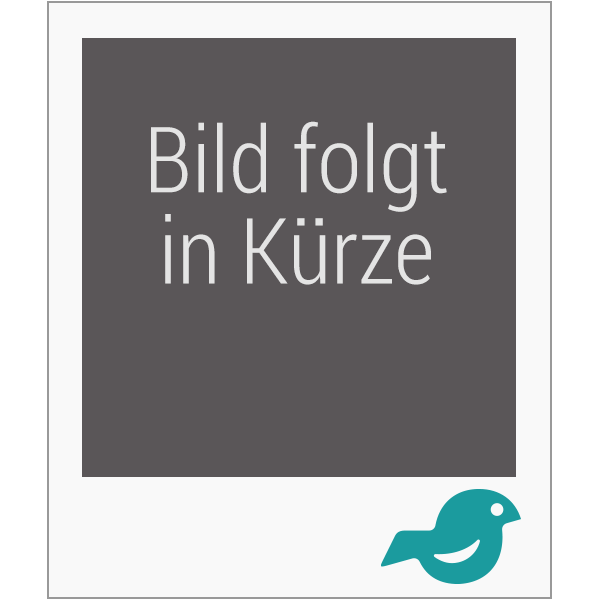- Broschiertes Buch
- Merkliste
- Auf die Merkliste
- Bewerten Bewerten
- Teilen
- Produkt teilen
- Produkterinnerung
- Produkterinnerung
Practical Strategies prepares students for entering the workplace, providing a concise, yet accessible guide of everything they need to know about audience and purpose, document design, research, style and more. Full of clear, practical advice and real-world examples, students can begin to practice the kinds of writing processes and products they'll encounter on the job.
Andere Kunden interessierten sich auch für
![Technical Communication Technical Communication]() Mike MarkelTechnical Communication67,99 €
Mike MarkelTechnical Communication67,99 €![A Pocket Style Manual with Exercises A Pocket Style Manual with Exercises]() Diana HackerA Pocket Style Manual with Exercises36,99 €
Diana HackerA Pocket Style Manual with Exercises36,99 €![Neue Wege zur Schlüsselqualifikation Schreiben Neue Wege zur Schlüsselqualifikation Schreiben]() Katrin GirgensohnNeue Wege zur Schlüsselqualifikation Schreiben49,99 €
Katrin GirgensohnNeue Wege zur Schlüsselqualifikation Schreiben49,99 €![Taking Charge of Your Career (HBR Women at Work Series) Taking Charge of Your Career (HBR Women at Work Series)]() Harvard Business ReviewTaking Charge of Your Career (HBR Women at Work Series)36,99 €
Harvard Business ReviewTaking Charge of Your Career (HBR Women at Work Series)36,99 €![Destination Dissertation Destination Dissertation]() Sonja K. FossDestination Dissertation85,99 €
Sonja K. FossDestination Dissertation85,99 €![Wissenschaftliches Arbeiten im Studium der Erziehungs- und Bildungswissenschaften Wissenschaftliches Arbeiten im Studium der Erziehungs- und Bildungswissenschaften]() Thorsten BohlWissenschaftliches Arbeiten im Studium der Erziehungs- und Bildungswissenschaften20,00 €
Thorsten BohlWissenschaftliches Arbeiten im Studium der Erziehungs- und Bildungswissenschaften20,00 €![Lern- und Arbeitstechniken für das Studium Lern- und Arbeitstechniken für das Studium]() Friedrich RostLern- und Arbeitstechniken für das Studium44,99 €
Friedrich RostLern- und Arbeitstechniken für das Studium44,99 €-
-
-
Practical Strategies prepares students for entering the workplace, providing a concise, yet accessible guide of everything they need to know about audience and purpose, document design, research, style and more. Full of clear, practical advice and real-world examples, students can begin to practice the kinds of writing processes and products they'll encounter on the job.
Produktdetails
- Produktdetails
- Verlag: Macmillan Learning
- Fifth Edition
- Seitenzahl: 544
- Erscheinungstermin: 14. Februar 2025
- Englisch
- Abmessung: 230mm x 202mm x 20mm
- Gewicht: 866g
- ISBN-13: 9781319589776
- ISBN-10: 1319589774
- Artikelnr.: 72008332
- Herstellerkennzeichnung
- Libri GmbH
- Europaallee 1
- 36244 Bad Hersfeld
- gpsr@libri.de
- Verlag: Macmillan Learning
- Fifth Edition
- Seitenzahl: 544
- Erscheinungstermin: 14. Februar 2025
- Englisch
- Abmessung: 230mm x 202mm x 20mm
- Gewicht: 866g
- ISBN-13: 9781319589776
- ISBN-10: 1319589774
- Artikelnr.: 72008332
- Herstellerkennzeichnung
- Libri GmbH
- Europaallee 1
- 36244 Bad Hersfeld
- gpsr@libri.de
Part 1 Working in the Technical-Communication Environment
1 Introduction to Technical Communication
* What Is Technical Communication?
* Why Technical Communication Skills Are Important in Your Career
* The Challenges of Producing Technical Communication
* Thinking Visually: Characteristics of a Technical Document
* Thinking Visually: Measures of Excellence in Technical Documents
* Skills and Qualities Shared by Successful Workplace Communicators
* A Look at Three Technical Documents
* Exercises
2 Understanding Ethical and Legal Obligations
* A Brief Introduction to Ethics
* Your Legal Obligations
* The Role of Corporate Culture in Ethical and Legal Conduct
* Understanding Ethical and Legal Issues Related to Social Media
* Communicating Ethically Across Cultures
* Thinking Visually: Principles for Ethical Communication
* Writer's Checklist
* Exercises
3 Writing Collaboratively
* Thinking Visually: Advantages and Disadvantages of Collaboration
* Managing Projects
* Conducting Meetings
* Using Electronic Tools in Collaboration
* Strategies for Online Communication: Jenny Gilbert on Crowdsourcing
Data and Information
* Gender and Collaboration
* Culture and Collaboration
* Writer's Checklist
* Exercises
Part 2 Planning and Drafting the Document
4 Analyzing Your Audience and Purpose
* Understanding Audience and Purpose
* Using an Audience Profile Sheet
* Techniques for Learning About Your Audience
* Thinking Visually: Determining the Important Characteristics of Your
Audience
* Communicating Across Cultures
* Applying What You Have Learned About Your Audience
* Writing for Multiple Audiences
* Determining Your Purpose
* Writer's Checklist
* Exercises
5 Researching Your Subject
* Understanding the Research Process
* Choosing Appropriate Research Methods
* Choices and Strategies: Research Questions and Methods
* Conducting Secondary Research
* Using AI Chatbots
* Conducting Primary Research
* Choices and Strategies: Choosing Types of Questions for
Questionnaires
* Writer's Checklist
* Exercises
6 Writing for Your Readers
* Presenting Yourself Effectively
* Using Conventional Patterns of Organization
* Choices and Strategies: Choosing Effective Organizational Patterns
* Writing Clear, Informative Titles
* Writing Clear, Informative Headings
* Writing Clear, Informative Paragraphs
* Writing Grammatically Correct Sentences
* Structuring Effective Sentences
* Choosing the Right Words and Phrases
* Use Inoffensive Language
* Writer's Checklist
* Exercises
Part 3 Designing User-Friendly Documents and Websites
7 Designing Print and Online Documents
* Goals of Document Design
* Planning the Design of Print and Online Documents
* Understanding Design Principles
* Designing Print Documents
* Designing Digital Documents
* Consider Matters of Accessibility
* Design for Multicultural Audiences
* Combining Print and Digital Documents
* Strategies for Online Communication: Calvin Jones on Using Multiple
Modalities
* Writer's Checklist
* Exercises
8 Creating Graphics
* The Functions of Graphics
* Thinking Visually: Characteristics of an Effective Graphic
* Understanding the Process of Creating Graphics
* Using Color Effectively
* Choosing the Appropriate Kind of Graphic
* Choices and Strategies: Choosing the Appropriate Kind of Graphic
* Illustrating Numerical Information
* Illustrating Logical Relationships
* Illustrating Process Descriptions and Instructions
* Illustrating Visual and Spatial Characteristics
* Creating Effective Graphics for Multicultural Readers
* Writer's Checklist
* Exercises
Part 4 Learning Important Applications
9 Corresponding in Print and Online
* Understanding the Process of Writing Correspondence
* Choices and Strategies: Choosing a Type of Correspondence
* Presenting Yourself Effectively in Correspondence
* Use the Appropriate Level of Formality
* Communicate Correctly
* Project the "You Attitude"
* Avoid Correspondence Clichés
* Communicate Honestly
* Elements of a Letter
* Common Types of Letters
* Writing Memos
* Writer's Checklist
* Exercises
10 Applying for a Job
* Establishing Your Professional Brand
* Understanding Job Search Strategies
* Elements of the Chronological Résumé
* Elements of the Skills Résumé
* Preparing a Plain-Text Résumé
* Writing Job-Application Letters
* Preparing for a Job Interview
* Writing Follow-up Letters or Emails After an Interview
* Writer's Checklist
* Exercises
11 Writing Proposals
* The Logistics of Proposals
* Internal and External Proposals
* Solicited and Unsolicited Proposals
* The "Deliverables" of Proposals
* Research Proposals
* Goods and Services Proposals
* Persuasion and Proposals
* Understanding Contexts
* Describing What You Plan To Do
* Demonstrating Your Professionalism
* The Structure of the Proposal
* Summary
* Introduction
* Proposed Program
* Qualifications and Experience
* Budget
* Appendixes
* Task Schedule
* Description of Evaluation Techniques
* Sample Internal Proposal
* Writer's Checklist
* Exercises
12 Writing Informational Reports
* Organizing Progress and Status Reports
* Concluding Progress and Status Reports
* Sample Progress Report
* Writing Incident Reports
* Writing Meeting Minutes
* Writer's Checklist
* Exercises
13 Writing Recommendation Reports
* Understanding the Role of Recommendation Reports
* Using a Problem-Solving Model for Preparing Recommendation Reports
* Identify the Problem or Opportunity
* Establish Criteria for Responding to the Problem or Opportunity
* Determine the Options
* Study Each Option According to the Criteria
* Draw Conclusions About Each Option
* Formulate Recommendations Based on the Conclusions
* Writing Recommendation Reports
* Writing the Body of the Report
* Writing the Front Matter
* Writing the Back Matter
* Sample Recommendation Report
* Writer's Checklist
* Exercises
14 Writing Definitions, Descriptions, and Instructions
* Writing Definitions
* Analyzing the Writing Situation for Definitions
* Writing Sentence Definitions
* Writing Extended Definitions
* Writing Descriptions
* Analyzing the Writing Situation for Descriptions
* Indicating Clearly the Nature and Scope of the Description
* Introducing the Description Clearly
* Providing Appropriate Detail
* Ending the Description with a Brief Conclusion
* A Look at Several Sample Descriptions
* Writing Instructions
* Strategies for Online Communication: Suzanne Barnhill on Moderating
User Forums
* Understanding the Role of Instructional Videos
* Designing a Set of Instructions
* Drafting Effective Instructions
* Revising, Editing, and Proofreading Instructions
* A Look at Several Sample Sets of Instructions
* Writing Manuals
* Writer's Checklist
* Exercises
15 Making Oral Presentations
* Understanding the Role of Oral Presentations
* Preparing the Presentation
* Analyzing the Speaking Situation
* Organizing and Developing the Presentation
* Preparing Presentation Graphics
* During a Presentation
* Choosing Effective Language
* Rehearsing the Presentation
* Thinking Visually: Delivering the Presentation
* Presenting to All Audiences
* Answering Questions After a Presentation
* Speaker's Checklist
* Exercises
Appendix: Reference Handbook
A Documenting Your Sources
* APA Style
* IEEE Style
* MLA Style
B Editing and Proofreading Your Documents
1 Introduction to Technical Communication
* What Is Technical Communication?
* Why Technical Communication Skills Are Important in Your Career
* The Challenges of Producing Technical Communication
* Thinking Visually: Characteristics of a Technical Document
* Thinking Visually: Measures of Excellence in Technical Documents
* Skills and Qualities Shared by Successful Workplace Communicators
* A Look at Three Technical Documents
* Exercises
2 Understanding Ethical and Legal Obligations
* A Brief Introduction to Ethics
* Your Legal Obligations
* The Role of Corporate Culture in Ethical and Legal Conduct
* Understanding Ethical and Legal Issues Related to Social Media
* Communicating Ethically Across Cultures
* Thinking Visually: Principles for Ethical Communication
* Writer's Checklist
* Exercises
3 Writing Collaboratively
* Thinking Visually: Advantages and Disadvantages of Collaboration
* Managing Projects
* Conducting Meetings
* Using Electronic Tools in Collaboration
* Strategies for Online Communication: Jenny Gilbert on Crowdsourcing
Data and Information
* Gender and Collaboration
* Culture and Collaboration
* Writer's Checklist
* Exercises
Part 2 Planning and Drafting the Document
4 Analyzing Your Audience and Purpose
* Understanding Audience and Purpose
* Using an Audience Profile Sheet
* Techniques for Learning About Your Audience
* Thinking Visually: Determining the Important Characteristics of Your
Audience
* Communicating Across Cultures
* Applying What You Have Learned About Your Audience
* Writing for Multiple Audiences
* Determining Your Purpose
* Writer's Checklist
* Exercises
5 Researching Your Subject
* Understanding the Research Process
* Choosing Appropriate Research Methods
* Choices and Strategies: Research Questions and Methods
* Conducting Secondary Research
* Using AI Chatbots
* Conducting Primary Research
* Choices and Strategies: Choosing Types of Questions for
Questionnaires
* Writer's Checklist
* Exercises
6 Writing for Your Readers
* Presenting Yourself Effectively
* Using Conventional Patterns of Organization
* Choices and Strategies: Choosing Effective Organizational Patterns
* Writing Clear, Informative Titles
* Writing Clear, Informative Headings
* Writing Clear, Informative Paragraphs
* Writing Grammatically Correct Sentences
* Structuring Effective Sentences
* Choosing the Right Words and Phrases
* Use Inoffensive Language
* Writer's Checklist
* Exercises
Part 3 Designing User-Friendly Documents and Websites
7 Designing Print and Online Documents
* Goals of Document Design
* Planning the Design of Print and Online Documents
* Understanding Design Principles
* Designing Print Documents
* Designing Digital Documents
* Consider Matters of Accessibility
* Design for Multicultural Audiences
* Combining Print and Digital Documents
* Strategies for Online Communication: Calvin Jones on Using Multiple
Modalities
* Writer's Checklist
* Exercises
8 Creating Graphics
* The Functions of Graphics
* Thinking Visually: Characteristics of an Effective Graphic
* Understanding the Process of Creating Graphics
* Using Color Effectively
* Choosing the Appropriate Kind of Graphic
* Choices and Strategies: Choosing the Appropriate Kind of Graphic
* Illustrating Numerical Information
* Illustrating Logical Relationships
* Illustrating Process Descriptions and Instructions
* Illustrating Visual and Spatial Characteristics
* Creating Effective Graphics for Multicultural Readers
* Writer's Checklist
* Exercises
Part 4 Learning Important Applications
9 Corresponding in Print and Online
* Understanding the Process of Writing Correspondence
* Choices and Strategies: Choosing a Type of Correspondence
* Presenting Yourself Effectively in Correspondence
* Use the Appropriate Level of Formality
* Communicate Correctly
* Project the "You Attitude"
* Avoid Correspondence Clichés
* Communicate Honestly
* Elements of a Letter
* Common Types of Letters
* Writing Memos
* Writer's Checklist
* Exercises
10 Applying for a Job
* Establishing Your Professional Brand
* Understanding Job Search Strategies
* Elements of the Chronological Résumé
* Elements of the Skills Résumé
* Preparing a Plain-Text Résumé
* Writing Job-Application Letters
* Preparing for a Job Interview
* Writing Follow-up Letters or Emails After an Interview
* Writer's Checklist
* Exercises
11 Writing Proposals
* The Logistics of Proposals
* Internal and External Proposals
* Solicited and Unsolicited Proposals
* The "Deliverables" of Proposals
* Research Proposals
* Goods and Services Proposals
* Persuasion and Proposals
* Understanding Contexts
* Describing What You Plan To Do
* Demonstrating Your Professionalism
* The Structure of the Proposal
* Summary
* Introduction
* Proposed Program
* Qualifications and Experience
* Budget
* Appendixes
* Task Schedule
* Description of Evaluation Techniques
* Sample Internal Proposal
* Writer's Checklist
* Exercises
12 Writing Informational Reports
* Organizing Progress and Status Reports
* Concluding Progress and Status Reports
* Sample Progress Report
* Writing Incident Reports
* Writing Meeting Minutes
* Writer's Checklist
* Exercises
13 Writing Recommendation Reports
* Understanding the Role of Recommendation Reports
* Using a Problem-Solving Model for Preparing Recommendation Reports
* Identify the Problem or Opportunity
* Establish Criteria for Responding to the Problem or Opportunity
* Determine the Options
* Study Each Option According to the Criteria
* Draw Conclusions About Each Option
* Formulate Recommendations Based on the Conclusions
* Writing Recommendation Reports
* Writing the Body of the Report
* Writing the Front Matter
* Writing the Back Matter
* Sample Recommendation Report
* Writer's Checklist
* Exercises
14 Writing Definitions, Descriptions, and Instructions
* Writing Definitions
* Analyzing the Writing Situation for Definitions
* Writing Sentence Definitions
* Writing Extended Definitions
* Writing Descriptions
* Analyzing the Writing Situation for Descriptions
* Indicating Clearly the Nature and Scope of the Description
* Introducing the Description Clearly
* Providing Appropriate Detail
* Ending the Description with a Brief Conclusion
* A Look at Several Sample Descriptions
* Writing Instructions
* Strategies for Online Communication: Suzanne Barnhill on Moderating
User Forums
* Understanding the Role of Instructional Videos
* Designing a Set of Instructions
* Drafting Effective Instructions
* Revising, Editing, and Proofreading Instructions
* A Look at Several Sample Sets of Instructions
* Writing Manuals
* Writer's Checklist
* Exercises
15 Making Oral Presentations
* Understanding the Role of Oral Presentations
* Preparing the Presentation
* Analyzing the Speaking Situation
* Organizing and Developing the Presentation
* Preparing Presentation Graphics
* During a Presentation
* Choosing Effective Language
* Rehearsing the Presentation
* Thinking Visually: Delivering the Presentation
* Presenting to All Audiences
* Answering Questions After a Presentation
* Speaker's Checklist
* Exercises
Appendix: Reference Handbook
A Documenting Your Sources
* APA Style
* IEEE Style
* MLA Style
B Editing and Proofreading Your Documents
Part 1 Working in the Technical-Communication Environment
1 Introduction to Technical Communication
* What Is Technical Communication?
* Why Technical Communication Skills Are Important in Your Career
* The Challenges of Producing Technical Communication
* Thinking Visually: Characteristics of a Technical Document
* Thinking Visually: Measures of Excellence in Technical Documents
* Skills and Qualities Shared by Successful Workplace Communicators
* A Look at Three Technical Documents
* Exercises
2 Understanding Ethical and Legal Obligations
* A Brief Introduction to Ethics
* Your Legal Obligations
* The Role of Corporate Culture in Ethical and Legal Conduct
* Understanding Ethical and Legal Issues Related to Social Media
* Communicating Ethically Across Cultures
* Thinking Visually: Principles for Ethical Communication
* Writer's Checklist
* Exercises
3 Writing Collaboratively
* Thinking Visually: Advantages and Disadvantages of Collaboration
* Managing Projects
* Conducting Meetings
* Using Electronic Tools in Collaboration
* Strategies for Online Communication: Jenny Gilbert on Crowdsourcing
Data and Information
* Gender and Collaboration
* Culture and Collaboration
* Writer's Checklist
* Exercises
Part 2 Planning and Drafting the Document
4 Analyzing Your Audience and Purpose
* Understanding Audience and Purpose
* Using an Audience Profile Sheet
* Techniques for Learning About Your Audience
* Thinking Visually: Determining the Important Characteristics of Your
Audience
* Communicating Across Cultures
* Applying What You Have Learned About Your Audience
* Writing for Multiple Audiences
* Determining Your Purpose
* Writer's Checklist
* Exercises
5 Researching Your Subject
* Understanding the Research Process
* Choosing Appropriate Research Methods
* Choices and Strategies: Research Questions and Methods
* Conducting Secondary Research
* Using AI Chatbots
* Conducting Primary Research
* Choices and Strategies: Choosing Types of Questions for
Questionnaires
* Writer's Checklist
* Exercises
6 Writing for Your Readers
* Presenting Yourself Effectively
* Using Conventional Patterns of Organization
* Choices and Strategies: Choosing Effective Organizational Patterns
* Writing Clear, Informative Titles
* Writing Clear, Informative Headings
* Writing Clear, Informative Paragraphs
* Writing Grammatically Correct Sentences
* Structuring Effective Sentences
* Choosing the Right Words and Phrases
* Use Inoffensive Language
* Writer's Checklist
* Exercises
Part 3 Designing User-Friendly Documents and Websites
7 Designing Print and Online Documents
* Goals of Document Design
* Planning the Design of Print and Online Documents
* Understanding Design Principles
* Designing Print Documents
* Designing Digital Documents
* Consider Matters of Accessibility
* Design for Multicultural Audiences
* Combining Print and Digital Documents
* Strategies for Online Communication: Calvin Jones on Using Multiple
Modalities
* Writer's Checklist
* Exercises
8 Creating Graphics
* The Functions of Graphics
* Thinking Visually: Characteristics of an Effective Graphic
* Understanding the Process of Creating Graphics
* Using Color Effectively
* Choosing the Appropriate Kind of Graphic
* Choices and Strategies: Choosing the Appropriate Kind of Graphic
* Illustrating Numerical Information
* Illustrating Logical Relationships
* Illustrating Process Descriptions and Instructions
* Illustrating Visual and Spatial Characteristics
* Creating Effective Graphics for Multicultural Readers
* Writer's Checklist
* Exercises
Part 4 Learning Important Applications
9 Corresponding in Print and Online
* Understanding the Process of Writing Correspondence
* Choices and Strategies: Choosing a Type of Correspondence
* Presenting Yourself Effectively in Correspondence
* Use the Appropriate Level of Formality
* Communicate Correctly
* Project the "You Attitude"
* Avoid Correspondence Clichés
* Communicate Honestly
* Elements of a Letter
* Common Types of Letters
* Writing Memos
* Writer's Checklist
* Exercises
10 Applying for a Job
* Establishing Your Professional Brand
* Understanding Job Search Strategies
* Elements of the Chronological Résumé
* Elements of the Skills Résumé
* Preparing a Plain-Text Résumé
* Writing Job-Application Letters
* Preparing for a Job Interview
* Writing Follow-up Letters or Emails After an Interview
* Writer's Checklist
* Exercises
11 Writing Proposals
* The Logistics of Proposals
* Internal and External Proposals
* Solicited and Unsolicited Proposals
* The "Deliverables" of Proposals
* Research Proposals
* Goods and Services Proposals
* Persuasion and Proposals
* Understanding Contexts
* Describing What You Plan To Do
* Demonstrating Your Professionalism
* The Structure of the Proposal
* Summary
* Introduction
* Proposed Program
* Qualifications and Experience
* Budget
* Appendixes
* Task Schedule
* Description of Evaluation Techniques
* Sample Internal Proposal
* Writer's Checklist
* Exercises
12 Writing Informational Reports
* Organizing Progress and Status Reports
* Concluding Progress and Status Reports
* Sample Progress Report
* Writing Incident Reports
* Writing Meeting Minutes
* Writer's Checklist
* Exercises
13 Writing Recommendation Reports
* Understanding the Role of Recommendation Reports
* Using a Problem-Solving Model for Preparing Recommendation Reports
* Identify the Problem or Opportunity
* Establish Criteria for Responding to the Problem or Opportunity
* Determine the Options
* Study Each Option According to the Criteria
* Draw Conclusions About Each Option
* Formulate Recommendations Based on the Conclusions
* Writing Recommendation Reports
* Writing the Body of the Report
* Writing the Front Matter
* Writing the Back Matter
* Sample Recommendation Report
* Writer's Checklist
* Exercises
14 Writing Definitions, Descriptions, and Instructions
* Writing Definitions
* Analyzing the Writing Situation for Definitions
* Writing Sentence Definitions
* Writing Extended Definitions
* Writing Descriptions
* Analyzing the Writing Situation for Descriptions
* Indicating Clearly the Nature and Scope of the Description
* Introducing the Description Clearly
* Providing Appropriate Detail
* Ending the Description with a Brief Conclusion
* A Look at Several Sample Descriptions
* Writing Instructions
* Strategies for Online Communication: Suzanne Barnhill on Moderating
User Forums
* Understanding the Role of Instructional Videos
* Designing a Set of Instructions
* Drafting Effective Instructions
* Revising, Editing, and Proofreading Instructions
* A Look at Several Sample Sets of Instructions
* Writing Manuals
* Writer's Checklist
* Exercises
15 Making Oral Presentations
* Understanding the Role of Oral Presentations
* Preparing the Presentation
* Analyzing the Speaking Situation
* Organizing and Developing the Presentation
* Preparing Presentation Graphics
* During a Presentation
* Choosing Effective Language
* Rehearsing the Presentation
* Thinking Visually: Delivering the Presentation
* Presenting to All Audiences
* Answering Questions After a Presentation
* Speaker's Checklist
* Exercises
Appendix: Reference Handbook
A Documenting Your Sources
* APA Style
* IEEE Style
* MLA Style
B Editing and Proofreading Your Documents
1 Introduction to Technical Communication
* What Is Technical Communication?
* Why Technical Communication Skills Are Important in Your Career
* The Challenges of Producing Technical Communication
* Thinking Visually: Characteristics of a Technical Document
* Thinking Visually: Measures of Excellence in Technical Documents
* Skills and Qualities Shared by Successful Workplace Communicators
* A Look at Three Technical Documents
* Exercises
2 Understanding Ethical and Legal Obligations
* A Brief Introduction to Ethics
* Your Legal Obligations
* The Role of Corporate Culture in Ethical and Legal Conduct
* Understanding Ethical and Legal Issues Related to Social Media
* Communicating Ethically Across Cultures
* Thinking Visually: Principles for Ethical Communication
* Writer's Checklist
* Exercises
3 Writing Collaboratively
* Thinking Visually: Advantages and Disadvantages of Collaboration
* Managing Projects
* Conducting Meetings
* Using Electronic Tools in Collaboration
* Strategies for Online Communication: Jenny Gilbert on Crowdsourcing
Data and Information
* Gender and Collaboration
* Culture and Collaboration
* Writer's Checklist
* Exercises
Part 2 Planning and Drafting the Document
4 Analyzing Your Audience and Purpose
* Understanding Audience and Purpose
* Using an Audience Profile Sheet
* Techniques for Learning About Your Audience
* Thinking Visually: Determining the Important Characteristics of Your
Audience
* Communicating Across Cultures
* Applying What You Have Learned About Your Audience
* Writing for Multiple Audiences
* Determining Your Purpose
* Writer's Checklist
* Exercises
5 Researching Your Subject
* Understanding the Research Process
* Choosing Appropriate Research Methods
* Choices and Strategies: Research Questions and Methods
* Conducting Secondary Research
* Using AI Chatbots
* Conducting Primary Research
* Choices and Strategies: Choosing Types of Questions for
Questionnaires
* Writer's Checklist
* Exercises
6 Writing for Your Readers
* Presenting Yourself Effectively
* Using Conventional Patterns of Organization
* Choices and Strategies: Choosing Effective Organizational Patterns
* Writing Clear, Informative Titles
* Writing Clear, Informative Headings
* Writing Clear, Informative Paragraphs
* Writing Grammatically Correct Sentences
* Structuring Effective Sentences
* Choosing the Right Words and Phrases
* Use Inoffensive Language
* Writer's Checklist
* Exercises
Part 3 Designing User-Friendly Documents and Websites
7 Designing Print and Online Documents
* Goals of Document Design
* Planning the Design of Print and Online Documents
* Understanding Design Principles
* Designing Print Documents
* Designing Digital Documents
* Consider Matters of Accessibility
* Design for Multicultural Audiences
* Combining Print and Digital Documents
* Strategies for Online Communication: Calvin Jones on Using Multiple
Modalities
* Writer's Checklist
* Exercises
8 Creating Graphics
* The Functions of Graphics
* Thinking Visually: Characteristics of an Effective Graphic
* Understanding the Process of Creating Graphics
* Using Color Effectively
* Choosing the Appropriate Kind of Graphic
* Choices and Strategies: Choosing the Appropriate Kind of Graphic
* Illustrating Numerical Information
* Illustrating Logical Relationships
* Illustrating Process Descriptions and Instructions
* Illustrating Visual and Spatial Characteristics
* Creating Effective Graphics for Multicultural Readers
* Writer's Checklist
* Exercises
Part 4 Learning Important Applications
9 Corresponding in Print and Online
* Understanding the Process of Writing Correspondence
* Choices and Strategies: Choosing a Type of Correspondence
* Presenting Yourself Effectively in Correspondence
* Use the Appropriate Level of Formality
* Communicate Correctly
* Project the "You Attitude"
* Avoid Correspondence Clichés
* Communicate Honestly
* Elements of a Letter
* Common Types of Letters
* Writing Memos
* Writer's Checklist
* Exercises
10 Applying for a Job
* Establishing Your Professional Brand
* Understanding Job Search Strategies
* Elements of the Chronological Résumé
* Elements of the Skills Résumé
* Preparing a Plain-Text Résumé
* Writing Job-Application Letters
* Preparing for a Job Interview
* Writing Follow-up Letters or Emails After an Interview
* Writer's Checklist
* Exercises
11 Writing Proposals
* The Logistics of Proposals
* Internal and External Proposals
* Solicited and Unsolicited Proposals
* The "Deliverables" of Proposals
* Research Proposals
* Goods and Services Proposals
* Persuasion and Proposals
* Understanding Contexts
* Describing What You Plan To Do
* Demonstrating Your Professionalism
* The Structure of the Proposal
* Summary
* Introduction
* Proposed Program
* Qualifications and Experience
* Budget
* Appendixes
* Task Schedule
* Description of Evaluation Techniques
* Sample Internal Proposal
* Writer's Checklist
* Exercises
12 Writing Informational Reports
* Organizing Progress and Status Reports
* Concluding Progress and Status Reports
* Sample Progress Report
* Writing Incident Reports
* Writing Meeting Minutes
* Writer's Checklist
* Exercises
13 Writing Recommendation Reports
* Understanding the Role of Recommendation Reports
* Using a Problem-Solving Model for Preparing Recommendation Reports
* Identify the Problem or Opportunity
* Establish Criteria for Responding to the Problem or Opportunity
* Determine the Options
* Study Each Option According to the Criteria
* Draw Conclusions About Each Option
* Formulate Recommendations Based on the Conclusions
* Writing Recommendation Reports
* Writing the Body of the Report
* Writing the Front Matter
* Writing the Back Matter
* Sample Recommendation Report
* Writer's Checklist
* Exercises
14 Writing Definitions, Descriptions, and Instructions
* Writing Definitions
* Analyzing the Writing Situation for Definitions
* Writing Sentence Definitions
* Writing Extended Definitions
* Writing Descriptions
* Analyzing the Writing Situation for Descriptions
* Indicating Clearly the Nature and Scope of the Description
* Introducing the Description Clearly
* Providing Appropriate Detail
* Ending the Description with a Brief Conclusion
* A Look at Several Sample Descriptions
* Writing Instructions
* Strategies for Online Communication: Suzanne Barnhill on Moderating
User Forums
* Understanding the Role of Instructional Videos
* Designing a Set of Instructions
* Drafting Effective Instructions
* Revising, Editing, and Proofreading Instructions
* A Look at Several Sample Sets of Instructions
* Writing Manuals
* Writer's Checklist
* Exercises
15 Making Oral Presentations
* Understanding the Role of Oral Presentations
* Preparing the Presentation
* Analyzing the Speaking Situation
* Organizing and Developing the Presentation
* Preparing Presentation Graphics
* During a Presentation
* Choosing Effective Language
* Rehearsing the Presentation
* Thinking Visually: Delivering the Presentation
* Presenting to All Audiences
* Answering Questions After a Presentation
* Speaker's Checklist
* Exercises
Appendix: Reference Handbook
A Documenting Your Sources
* APA Style
* IEEE Style
* MLA Style
B Editing and Proofreading Your Documents








